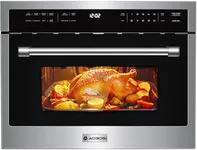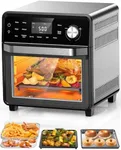Buying Guide for the Best Breville Toaster Ovens
Choosing the right toaster oven can make your daily kitchen tasks easier, from toasting bread to baking small meals. Before picking one, think about what you'll use it for most often—whether it's simply reheating leftovers, making toast, or trying more advanced recipes like pizza or roast vegetables. To find the toaster oven that suits you best, compare the main features and think about how each will fit into your cooking habits and available kitchen space.CapacityCapacity refers to the amount of food or the size of items the toaster oven can handle at once. It's often measured in slices of bread, liters, or even the size of pizza that can fit. Smaller capacities are great for singles, couples, or limited countertop space, handling things like a few slices of toast or a small meal. Medium capacities can usually toast 6 slices of bread or fit a 12-inch pizza, which suits most families. Larger ovens give you even more versatility but do take up more space. To pick the right size, consider how much counter space you have and whether you like to cook for groups or just for yourself.
Heating Element TypeToaster ovens may use quartz, ceramic, or metal heating elements, and some may even feature convection fans. Quartz heats up quickly and cooks food more evenly, while metal elements are more traditional but may not distribute heat as evenly. Convection fans circulate hot air, speeding up cooking and providing crisper results. If you mostly toast or reheat, any type will work, but for baking or roasting, a model with quartz elements and convection is often more effective. Your choice should depend on whether you need fast, even cooking or just basic toasting.
Functions and PresetsMost toaster ovens come with various cooking functions such as toast, bake, broil, roast, and sometimes even reheat, pizza, or cookies. Simpler models have basic toast and bake settings, while advanced ones offer numerous presets for different foods. If you enjoy experimenting or making a variety of dishes, look for a toaster oven with more cooking functions. For everyday use and basic needs, a model with just a few essential presets is often sufficient.
Temperature RangeThe temperature range tells you how hot (or cool) the toaster oven can get, usually spanning from around 150°F to 450°F. A wider range is helpful if you plan to slow-cook or proof dough at low temperatures, as well as sear or roast at higher ones. More limited ranges are typically fine for toast, basic baking, and reheating. Think about the types of food you want to cook and check if the toaster oven’s temperature options match those needs.
Controls and DisplayControls can be simple dials, electronic buttons, or touchscreen displays. Manual dials are straightforward and reliable but offer less precision. Digital displays allow for more exact settings and sometimes include timers or alerts. If you appreciate convenience and precision or want to pre-set times, look for a digital interface. If you prefer durability and simplicity, classic dials might be better.
Ease of CleaningCleaning involves the crumb tray, non-stick interior, and removable racks. A toaster oven with a pull-out crumb tray and dishwasher-safe accessories makes upkeep much simpler. If you cook often or are concerned about burnt-on food, look for models with easy-to-clean features. Choosing one that’s simple to maintain can help keep your appliance looking good and lasting longer.





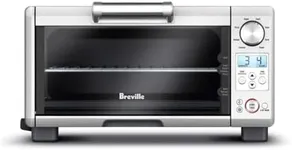
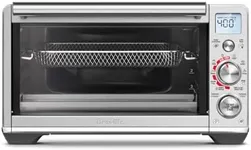
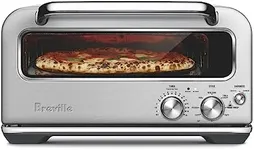
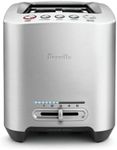

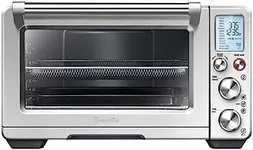

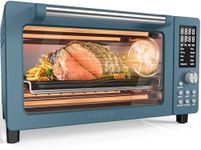
![Neretva [21 QT& 6-in-1] Toaster Oven & Air Fryer, Compact Toaster Ovens Countertop with 5 Slices 1500W Rapid Heat Air Fryer Toaster Oven Combo Stainless Steel for Bake/Toast/Broil/Air Fryer/Defrost](https://images-proxy.bestreviews.guide/dC6LguTgUpvSI3j2ANEmuEindXw=/0x150/https://m.media-amazon.com/images/I/414NyeNzxPL._AC_CX679_.jpg)
